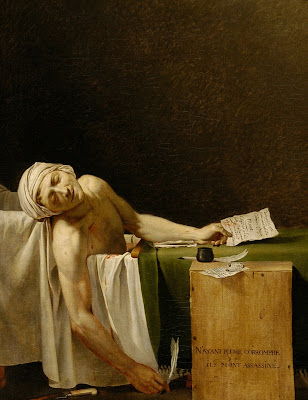Renaissance Art: Mona Lisa
Portraits were often commissioned by wealthy people during the Renaissance period. Mona Lisa is thought to be commissioned by a wealthy merchant who mysteriously never received the painting of his wife (Dr. Steven Zucker and Dr. Beth Harris 2015). Leonardo da Vinci held onto the painting and brought it with him to France where it became a part of the royal collection and remains today (Louvre.fr Editors).
The Louvre Museum in Paris, France displays Mona Lisa in the largest room of the palace (Louvre.fr Editors). It is hung in a glass case and is always guarded. Although there are other pieces hung in the room, Mona Lisa remains the focal point being hung on the center wall by itself.
Final Thoughts
Many people look at Mona Lisa as being a symbol of happiness because of her captivating smile however, I find her smile to come across mischievous. She also seems to always have her eyes on you no matter the direction you move. The dreamy gaze makes me believe she was a powerful woman and she was aware of the power she held. People tend to question its fame but I think it's well deserved especially considering all that the painting has been through and how influential Mona Lisa was for the time period.
Sources
History.com Editors. “Leonardo Da Vinci.” History.com, A&E Television Networks, 13 Jul. 2022, https://www.history.com/topics/renaissance/leonardo-da-vinci.
Dr. Steven Zucker and Dr. Beth Harris. “Leonardo, Mona Lisa.” Smarthistory, 9 Aug. 2015, https://smarthistory.org/leonardo-mona-lisa/.
Louvre.fr Editors. “From the 'Mona Lisa' to 'The Wedding Feast at Cana'.” Le Louvre, https://www.louvre.fr/en/explore/the-palace/from-the-mona-lisa-to-the-wedding-feast-at-cana.
Omer, Saphic. “The Humanism of Da Vinci's ‘Mona Lisa’ and Michelangelo's ‘David.’” IslamiCity, 31 Aug. 2022, https://www.islamicity.org/81585/the-humanism-of-da-vincis-mona-lisa-and-michelangelos-david/.






I think that The Mona Lisa represents humanism well, and you pointed out that her hands are included in the portrait which was uncommon for the time period. I think that this further represents humanism because it displays more of the individual, or perhaps it insinuates that this woman was of high status. In this case, it still presents an aspect of humanism that is specific to the Renaissance era. The colors are very muted, and the shadows and highlights are pretty contrasting without being too sharp in transition which adds to the softness of the painting. It almost looks like it had a yellow-green filter over the whole painting. I wonder if the muting of the colors was deliberate.
ReplyDelete